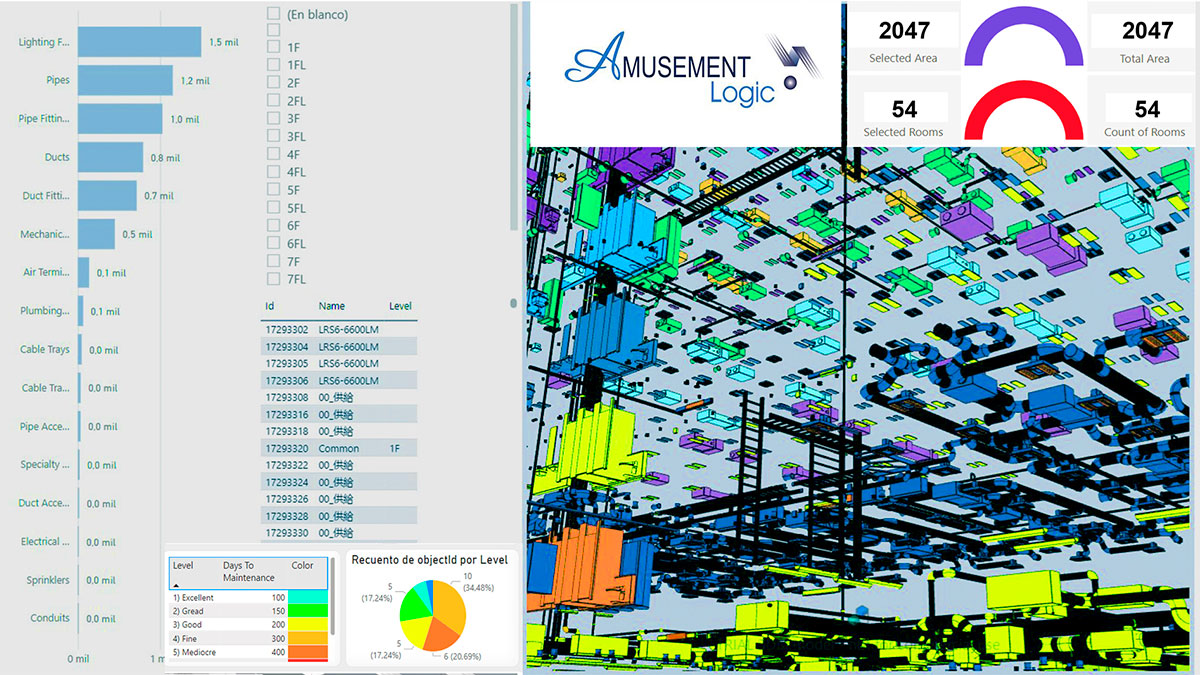In architecture and construction, BIM (Building Information Modelling) methodology has become an indispensable tool. BIM’s ability to integrate detailed information into 3D models, has transformed the way we execute architecture and construction projects. However, the power of the BIM methodology is amplified when combined with KPI (Key Performance Indicators) reporting tables.
These tables allow the human teams of an architecture and construction project to check, analyse and optimise every aspect of its development, in real time and with unprecedented accuracy. They are visual tools that clearly and concisely represent the costs, time, quality, sustainability and other details of the project, in other.words, the Key Performance Indicators.

Benefits of KPIs in architecture and construction
- Visibility and transparency: they enable stakeholders to quickly identify problem areas and take corrective action.
- Improved decision making: with accurate and up-to-date data, teams can make informed decisions that optimise resources and improve project efficiency.
- Cost and time control: Continuous monitoring of cost and time-related performance indicators helps to avoid significant deviations and keep the architecture and construction project on budget and on schedule.
- Quality and sustainability: checking quality and sustainability indicators ensures that the project meets the required standards and makes a positive contribution to the environment.
Maximising the benefits of KPIs in architecture and construction
- Defining relevant indicators: it is necessary to identify and select the most relevant KPIs for the project objectives.
- Data integration: ensure that the data needed to calculate KPIs are integrated into the BIM model, including cost data, schedules, technical specifications, etc.
- Appropriate tools and software: we must use specialised software that allows the integration of the indicator tables into the BIM system.
- Continuous checking and adjustment: it is necessary to implement a continuous checking system to update performance indicators in real time, so that we can adjust strategies and make decisions based on an updated status of the project.
The integration of key performance indicator tables in architecture and construction projects with BIM methodology, not only facilitates their management and execution, but also drives innovation and efficiency. Adopting this practice makes a significant difference in the ability of teams to deliver successful projects, within budget and on time, and with high levels of quality and sustainability.
By David González Molina, BIM Manager at Amusement Logic Architecture Dept.






